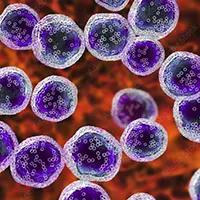Commentary
Video
Dr Zonder on the Outcomes of the PERSEUS Trial in Multiple Myeloma
Author(s):
Jeffrey Zonder, MD, discusses the outcomes of the phase 3 PERSEUS trial in patients with relapsed/refractory multiple myeloma.
Jeffrey Zonder, MD, leader, Multiple Myeloma and Amyloidosis Multidisciplinary Team, Barbara Ann Karmanos Cancer Institute; vice chair, M1 IRB Committee, Wayne State University, discusses the outcomes of the phase 3 PERSEUS trial (NCT03710603) in patients with relapsed/refractory multiple myeloma.
Findings from the randomized PERSEUS trial at a median follow-up of 47.5 months were presented at the 2023 ASH Annual Meeting. This trial investigated the use of induction therapy with subcutaneous daratumumab (Darzalex), bortezomib (Velcade), lenalidomide (Revlimid), and dexamethasone (D-VRd) followed by autologous stem cell transplant (ASCT), D-VRd consolidation, and daratumumab/lenalidomide (DR) maintenance compared with VRd induction, ASCT, VRd consolidation, and lenalidomide maintenance in patients with newly diagnosed, transplant-eligible multiple myeloma.
During ASH, findings from the PERSEUS study were presented as a late-breaking abstract, as PERSEUS served as a larger phase 3 confirmatory follow-up to the previously reported phase 2 GRIFFIN study (NCT02874742), Zonder begins. GRIFFIN, a randomized investigation, demonstrated that adding daratumumab to VRd followed by transplant and lenalidomide maintenance marginally enhanced progression-free survival (PFS) and significantly improved response quality and the likelihood of achieving stringent complete response (CR) vs VRd alone, Zonder explains. Furthermore, the addition of daratumumab produced a better likelihood at attaining minimal residual disease (MRD)–negativity; this finding was pivotal, he adds.
PERSEUS, being a substantially larger study than GRIFFIN, with 709 patients, yielded crucial data inthe relapsed/refractory multiple myeloma population, he continues. Patients were randomly assigned to either arm, and MRD negativity was assessed during maintenance, Zonder states. If patients became MRD negative when receiving daratumumab-containing maintenance therapy, daratumumab was discontinued, and patients continued lenalidomide alone; otherwise, daratumumab was continued throughout maintenance, he elucidates.
The primary end point of the study was PFS, and other important end points included CR or better, overall survival, and MRD negativity rates, Zonder expands. Patient stratification indicated standard risk, with approximately 21% to 22% of patients having high-risk cytogenetics and only a small fraction presenting with extramedullary disease, he notes. Overall, the 4-year PFS rates favored daratumumab-containing therapy at 84.3% compared with 67.7% in the VRd-alone group (HR, 0.42; 95% CI, 0.30-0.59; P < .0001), Zonder concludes.









